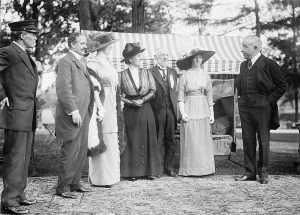I have trained online public speaking courses almost every day of this year. One reason that people join the trainings: they feel they do not connect with the audience when a screen is in-between.
The fear is totally unfounded.
Virtually everyone connects easily through Zoom, or whatever the platform. This is obvious at the beginning of a training. When participants share what they want to get out of the day, they talk smoothly and naturally, they are being themselves, they connect.
The fear is also totally founded.
Not everyone but many of us, switch character as soon as we launch into ‘official presenting mode’. We suddenly speak differently. We are no longer ourselves. And suddenly, very suddenly, the connection is lost.
Why does it happen?
One reason is that people get sucked up by their notes or slides. They start reading. It’s a trap the online world lays for us. After all, you cannot see that I have a text in front of me. So why shouldn’t I read? I can get away with it.
No, you can’t.
Not even Barack Obama can. Take a peek into this speech:
He doesn’t really connect, does he? And that is even though Barack Obama is better at reading a speech than 99.9999999 % of people on the planet. He also has a great starting position because he knows how to write a speech for the ear. So do his speechwriters. Writing for the ear is a serious art, one that most of us don’t master. That’s why we easily end up writing in a style that doesn’t fit the spoken word. The consequence: we read a text that doesn’t allow us to be natural.
So what to do? Don’t read. Speak.
Public speaking is the art of speaking, freely. We speak powerfully when we speak freely.
But how do you do it?
That’s best explained by what it doesn’t mean to speak freely.
- It doesn’t mean that you learn your speech by heart.
- It also doesn’t mean that you cannot have notes.
- Nor does it mean that you are not allowed to forget your next point.
It’s totally fair to forget what’s next. That is, in fact, what notes are there for. They are there to help you find your way back – with a short glance.
That is the trick: the short glance.
It can be keywords. Or little images or symbols you draw.
Their job is to be an efficient helper. The short glance must be enough for you to remember:
“Ah yes…that was the next point.”
The process can be explicit. You can say:
“What did I want to say next?
Let me have a look.“
Make this a moment of calm and serenity. Take your time to find the keyword you are looking for. If you need glasses, take your time to put them on.
Once you see your keyword, you look up and say:
“Ah yes, that’s it…“
Now you launch into the next point. You don’t know the words by heart, nor do you read them. You take them from within you. You let them come. If you know the point you want to make (and why you are making it), you don’t need to worry. Your words will come. And they will be good.
It’s like swimming. Once you have learned to swim, you need to trust that you can swim. Because you can swim.
The test is easily made. In a training, when a participant reads a text and its not very clear, I invite the speaker to say it again, spontaneously and freely, without notes or slides. The result? We are all better when we say it in our ‘own’ words. Much better.





4 thoughts on “You can swim: the guts to speak freely”
So true! Excellent blogpost.
I am glad you agree Julie. It comes from someone who certainly knows how to speak freely!
Great post Carsten. I attended Ken Follett’s latest book launch the other day and it was clear he was reading his notes and not fully connecting with me. I was disappointed. He has spent so long writing his latest novel, why does he need notes? If he doesn’t know his story then who does? On whatever stage we stand or sit, talking freely without notes or slides is liberating and the return on connection is bigger! (Just made up a new business term: ROC!)
I love it: Return on Connection. I will use that, if you permit – giving the inventor full credit of course🙂!